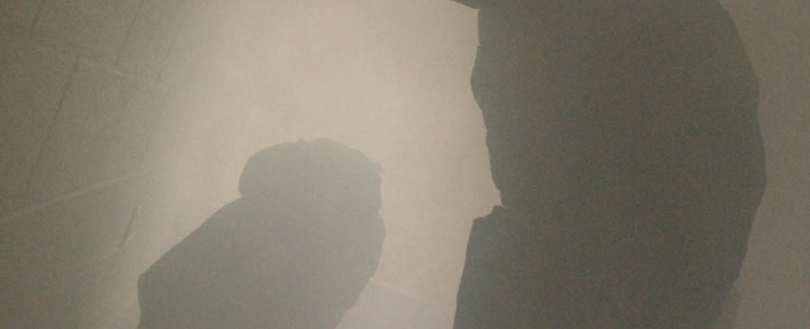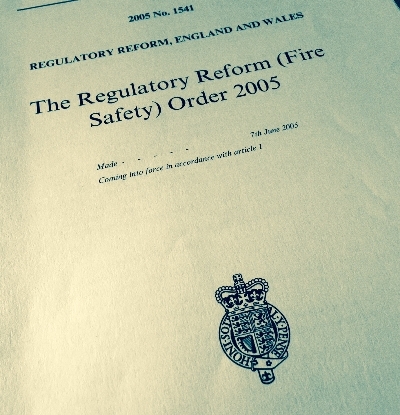- Homepage
- News
- Blogs & Articles
- Is your emergency lighting up to standard?

Is your emergency lighting up to standard?
Like it? Share it!
11 April 2016 by FIA Team, FIA Team
Imagine you’re playing a video game. You’re trapped in a room and you need to get out. Behind you, there’s a fire. In front and all around there is smoke and visibility is rapidly reducing. You scan the room for the exit sign but through all the smoke, you can’t see it. You try one way but the exit is blocked by builder’s rubbish. There’s no other obvious way out and the timer in the game is ticking: if you don’t get out of the room before the timer is up, you’ll get the ‘Game Over’ screen.

Except in real life, you don’t get a ‘Game Over’ screen and there is no option to restart the game again. If you can’t escape, it really is the end. It might sound dramatic, but sadly there are still fires happening in the UK that cause deaths that need not have happened. People need clear exits. People need clear escape routes.
In 2013-14 there were 322 fire-related deaths in Great Britain, according to a report by the Department for Communities and Local Government (a report for 2015-16 has not yet been published). 41% of fire-related deaths in Great Britain were caused by the victim being overcome by gas, smoke or toxic fumes. Of course, some of these may have been avoidable with the correct installation and use of fire safety equipment.
You would hope that you’d never need to use it, but emergency and safety lighting is a necessary addition to any building. This is not just a recommendation – it is in fact the law. The Regulatory Reform (Fire Safety) Order 2005, Article 14, states that ‘emergency routes and exits must be indicated by signs; and emergency routes and exits requiring illumination must be provided with emergency lighting of adequate intensity in the case of failure of their normal lighting.’ Essentially, all non-domestic buildings must have emergency lighting installed in case of instances of fire.

What does emergency lighting actually do? And how does it work? In simplistic terms, emergency lighting is designed to withstand power outage, usually by the use of batteries. That way, it is not dependant on being connected to the main power within the building and can activate even if the source of the fire is electrical. However, there are many British standards surrounding emergency lighting and the guidance can get confusing to those who are not familiar with it.

Knowing precisely what lighting you need, and where it needs to be placed requires more than rudimentary knowledge. There are many different types of lighting, including illuminated emergency exit signs, bulkhead emergency lights, and open area lighting – each with a specific purpose and usage guidelines. With a multitude of companies offering a multitude of different products, it is vital to ensure that you chose one that has knowledge and experience of fitting and maintaining emergency lighting systems.
The consequences for business owners who fail to comply with fire safety legislation can be dire. Not only could the building burn to the ground in the event of a fire (as with any building), but owners are also liable for any breaches of the law in regard to the Regulatory Reform (Fire Safety) Order 2005. Just by way of example, the Torquay Herald Express reported last month on a business partner of a Paignton hotel who was ordered to pay £11,500 after breaching fire safety laws, including failing to provide adequate emergency lighting as part of the fire safety provision within the hotel. In this case, one of the most alarming offences was that ‘The fire escape route from the rear of the hotel was not signed, did not have emergency lighting provided and did not lead to a place of safety, one route being to a dead end.’ Shocking, but sadly not the only incident in the UK where this is the case. The Fire Industry Association (FIA) is regularly notified of incidents just like this every week.
So how can you safeguard yourself and those accessing the building, especially if you are responsible for fire safety on the premises? The best way is to place your trust in a company that has a wealth of knowledge, experience, and up-to-date training to advise on installing and maintaining fire safety equipment, including emergency and safety lighting. It is important to use a company with competent individuals who know their products, can understand the needs of your building, and are familiar with best practise outlined in the British standards.
So how do I know if a company is competent? It is recommended that you chose a company with Third Party Certification (which simply means an independent company has verified that they comply with best practise). An easy way to check is to look on the company website for the FIA logo, as all members of the Association are certified independently by a recognised certification body. Or to search for a reputable fire safety company, click ‘Find a Member’.
-

FIA Team
FIA Team
Related posts
-
Ensuring fire safety in schools: responsibilities, developments, and training
06 October 2023
By Neil Budd, FIA Technical manager
-
On this day, forgotten disasters: Summerland disaster
02 August 2023
By Kirsty Lavell, Marketing Manager
-
Fireside Chat with Hanif Ghodawala, Business Development Manager for Advanced Emergency Lighting Division
01 August 2023
By Kirsty Lavell, Marketing Manager
Related news
-
FIA Emergency Lighting Course Achieves Level 3 FireQual Status
22 December 2025
-
Business Owner Fined for Breaching Fire Safety Legislation
06 October 2025
-
Addressing Fire Safety Risks in Social Housing
11 February 2025
